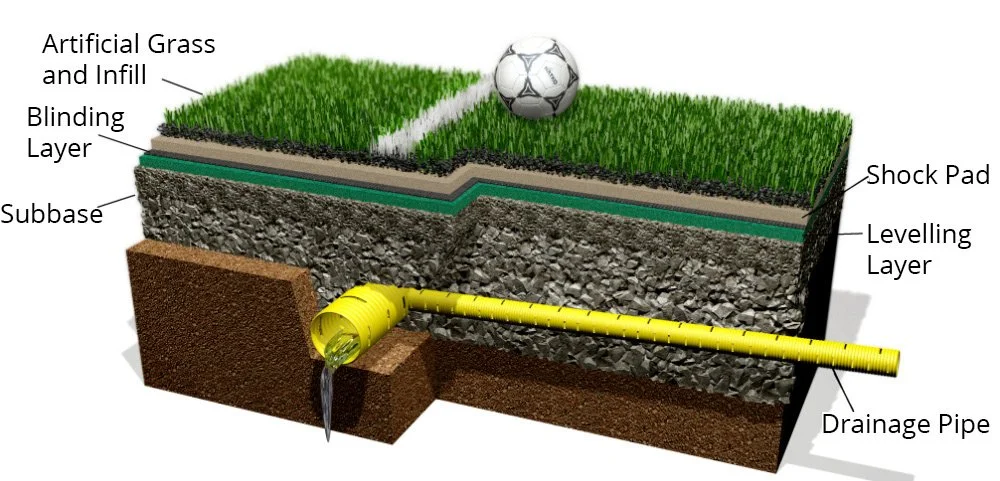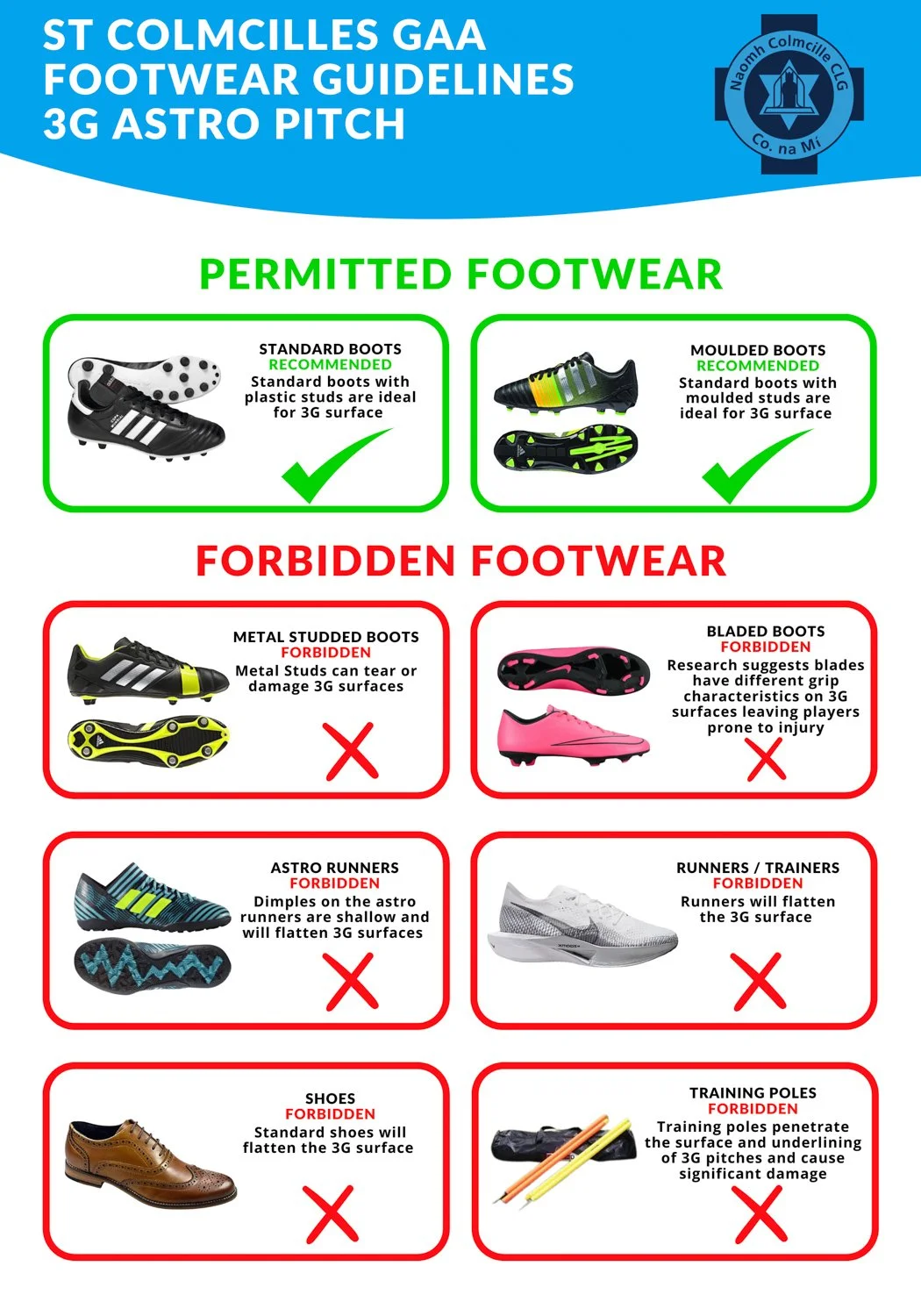Some detail on our new All-Weather (3G) Pitch
At St Colmcilles we have recently completed our state of the art, all weather, 3G pitch in Pairc Ui Rís, Piltown. The pitch which now replaces the ‘top pitch’ is the result of endless hard work and fundraising by our volunteers and club members. It will serve our young people for many years into the future and is a significant community development.
3G simply means Third Generation. 3G differs from ‘Astro’ pitches in that it offers a surface which closely mimics a standard grass pitch. Below is an image which best shows the structure beneath the new pitch. Many of you will have seen our videos and photo updates on social media showing each layer as it was added to the site.
In order to maintain this surface (and our warranty) it needs care and attention and it needs it often. If everyone at St Colmcilles follows the guidelines provided to us we will enjoy many many years of sport on this wonderful addition to the Cilles infrastructure.
What sort of guidelines?
Only football boots can be worn on the surface and no other footwear should be worn when accessing the pitch. This includes footwear worn by coaches / mentors etc.
When we say football boots we are being quite specific. We cannot allow shoes, runners, astro’s or bladed boots to be worn on the surface.
What type of boots are allowed on the pitch and which are prohibited?
Boots with plastic screw in studs or moulded plastic studs are the correct footwear, other boots can cause problems. Specifically:
Metal studded boots are designed to give extra grip on hard surfaces. 3G pitches don’t harden, and metal studs can tear or damage the surface.
Bladed boots are not recommended. Whilst they are unlikely to damage the surface, there is some studies that suggest the grip profile with bladed boots differs on 3G, and can lead to slightly elevated risk of injury.
What about Astros? Surely they’re designed for this?
Afraid not: Astros are designed for astro turf pitches not 3G pitches. The dimples on Astros are too shallow, and can lead to flattening of the surface. Therefore, Astros are not permitted.
Can children play in bare feet?
Unfortunately not as this is a health and safety risk and similar to runners and shoes will flatten the surface.
I’m a parent, does this mean I need to go buy boots?
Not at all. Access to the pitch surface will be limited to players, mentors and match officials, so in theory you should have no need to step on to the playing surface. Supporters will remain outside the perimeter fencing which is partially completed, there will be no need to access the 3G surface.
If my child arrives without their boots, will they be still allowed to train?
We ask for co-operation from all parents to avoid this problem. Obviously our goal is to ensure that training for juveniles is both safe and fun, and we don’t like having children sit out training sessions. But please bear in mind that this is a not just about pitch maintenance but also about safety. Runners do not grip well on a 3G surface, so we’ll be treating incorrect footwear similar to a child missing a gum shield or a hurling helmet.
What about visiting teams? How will they know the rules?
Simply send the link for this page to your opposition before they embark for the game. Many of your children will already have played on similar surfaces throughout the county and know the procedures in place. We can respectfully ask for their co-operation; it would be normal for visiting teams to wear boots.
Remember
A word of caution on bladed boots.
In 2016 the Leinster Sports Clinic issues a notice to parents and coaches relating to the increase in knee injuries associated with the use of blades or boots with triangular studs. Below is a brief synopsis of their notice;
Leinster Sports Clinic on triangular studs V’s rounded studs
‘A note to all parents & coaches, we have noticed a huge increase recently in knee injuries in junior and senior players in Rugby / GAA, Camogie, football & hurling.
Many of these injuries can be prevented by small changes in the footwear of the players, the recent trend is to wear boots with triangular studs , when the foot is planted in the ground the player tries to rotate the foot and the foot due to the triangular stud is staying planted in the ground , thus causing a severe rotation of the knee joint where injury is then sustained( particularly ACL/PLC Ruptures) .With a rounded stud the stud rotates effectively and the knee is rotating in line with the foot therefore no excessive pressure is put on the knee joint. It may be worth thinking about when purchasing your next pair of boots.
The science bit ...
Firstly, when the stud acts with maximum resistance against flow directed onto its drive surface, the “form drag” attributable to the abrupt drive surface is substantially supplemented by “friction drag” associated with the large surface area of the stud on the inclined downstream side. Secondly, because the abrupt drive surface interrupts and distorts flow to an extreme extent, we find that flow past the stud requires disturbances in the ground surface well out beyond the sides of the stud and this accounts for a high level of drag. More particularly, where two adjacent studs are positioned sufficiently close side-by-side that their zones of flow distortion overlap, the studs start to behave like a continuous bar whose effect extends right across and indeed potentially beyond the sole.’
Following the issue of the above notice they followed up with a link to a paper written for Science Direct which discusses the effect of differing cleat designs on feet and leg joints.
If you want to read the Science Direct Article just click here



